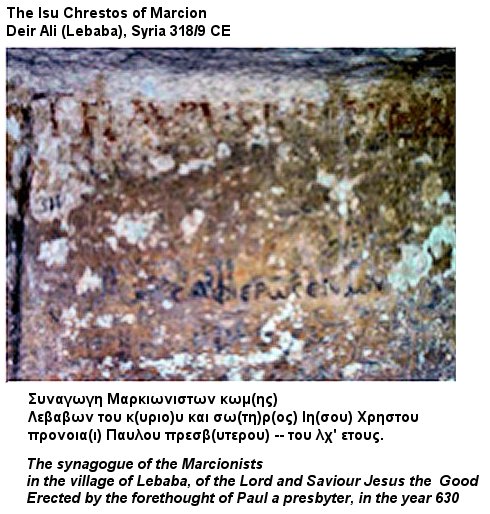Already Cosaert has noted that there are textual differences between Origen's citation of the Gospel of Mark in treatises written in Alexandria and Caesarea. Now we have to take matters one step further and recognize that someone (perhaps Origen himself) changed his original gospel commentary to reflect the existence of 'Matthew,' 'Mark,' 'Luke' and 'John' as part of the reshaping of the current 'Commentary on Matthew.' This is demonstrated by the fact that the so-called Commentary on Matthew strangely and consistently references parallel references from the four gospels but that these references almost always line up with the order of parallel sections in the Diatessaron. In other words, the original text just cited the material as it appear in Origen's Alexandria and then this original text was rearranged to reflect the order of canonical Matthew (much like what we have suggested happened to the original 'Against Marcion' with respect to Luke) and then later the references were 'polished' with specific references to the four gospels (in order to explain why Origen keeps referencing foreign material in a supposed 'Commentary on Matthew').
Just as we have suggested with the reworking of gospel references in the first three books of Clement of Alexandria's Stromata there are examples of the use of 'down to' (= ἕως) which may arguably be said to reflect textual variants found in Origen's original Alexandrian gospel which were passed down to his original commentary on the gospel which in turn was reshaped into our existing Commentary on Matthew. One such example is his reference to 'Moses and Elijah appeared in glory in Jerusalem':
But when the Son of God in His transfiguration is so understood and beheld, that His face is a sun, and His garments white as the light, straightway there will appear to him who beholds Jesus in such form Moses,—the law—and Elijah,—in the way of synecdoche, not one prophet only, but all the prophets—holding converse with Jesus; for such is the force of the words “talking with Him; ” (Matt 17:3) but, according to Luke, “Moses and Elijah appeared in glory” down to the words “in Jerusalem” (Μωσῆς καὶ Ἠλίας ὀφθέντες ἐν δόξῃ καὶ τὰ ἑξῆς ἕως τοῦ ἐν Ἱερουσαλήμ Matt 17:3) But if any one sees the glory of Moses, having understood the spiritual law as a discourse in harmony with Jesus, and the wisdom in the prophets which is hidden in a mystery, (I Cor 2, 7) he sees Moses and Elijah in glory when he sees them with Jesus. Then, since it will be necessary to expound the passage as given in Mark, “And as He was praying He was transfigured before them, ” (Luke 9:28, 29 alone mentions the praying). we must say that perhaps it is possible especially to see the Word transfigured before us if we have done the things aforesaid, and gone up into the mountain, and seen the absolute Word holding converse with the Father, and praying to Him for such things as the true High-Priest might pray for to the only true God. But in order that He may thus hold fellowship with God and pray to the Father, He goes up into the mountain; and then, according to Mark, “His garments become white and glistening as the light, so as no fuller on earth can whiten them.” (Mark 9:3)
I have long noticed that the Arabic Diatessaron makes reference to this tradition of Moses and Elijah appearing in Jerusalem. I sent an email correspondence to Professor Tjitze Baarda who turned my suggestion into a recent paper where I was credited with the discovery in the opening footnote.
The point of course is that there was a gospel harmony (associated with the heretics) which suggested that Jesus appeared with Moses and Elijah in glory at Jerusalem after the Passion. Teeple has suggested this possibility in another paper and it is confirmed in Coptic apocalyptic literature.






















































